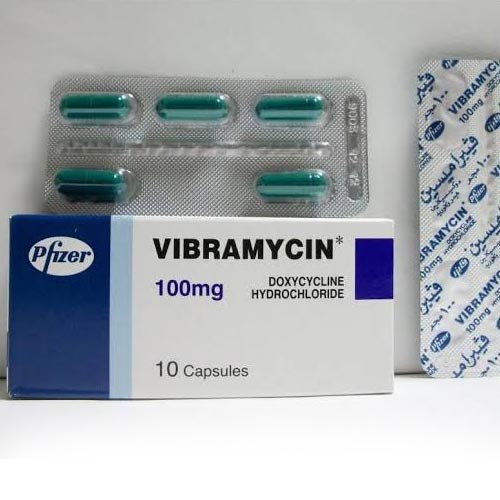Description
Doxycycline is a broad-spectrum antibiotic synthetically derived from oxytetracycline. This drug is a second-generation tetracycline, exhibiting lesser toxicity than first-generation tetracyclines. Doxycycline may be used to treat a wide range of bacterial infections, depending on the results of antibiotic susceptibility testing.
Doxycycline is indicated for the treatment of various infections by gram-positive and gram-negative bacteria, aerobes and anaerobes, as well other types of bacteria. A complete list of organisms is available in the FDA label and in the “indications” section of this drug entry.
The following are some of the major infections that may be treated with doxycycline: Rocky mountain spotted fever, typhus fever and the typhus group, Q fever, rickettsialpox, and tick fevers caused by Rickettsiae, Respiratory tract infections caused by Mycoplasma pneumoniae, Lymphogranuloma venereum caused by Chlamydia trachomatis, Psittacosis (ornithosis) caused by Chlamydia psittaci, Trachoma caused by Chlamydia trachomatis, although the infectious agent is not always eliminated as judged by immunofluorescence, Inclusion conjunctivitis caused by Chlamydia trachomatis, Uncomplicated urethral, endocervical or rectal infections in adults caused by Chlamydia trachomatis, Nongonococcal urethritis caused by Ureaplasma urealyticum, Relapsing fever due to Borrelia recurrentis.
Pharmacodynamics
The tetracyclines, including doxycycline, are mainly bacteriostatic and are thought to exert antimicrobial effects by the inhibition of protein synthesis. Bacteriostatic antibiotics suppress the growth of bacteria, or keep them in the stationary phase of growth.
The tetracyclines, including doxycycline, have a similar antimicrobial spectrum of activity against a variety of gram-positive and gram-negative microorganisms, treating numerous infectious diseases. Cross-resistance of these microorganisms to tetracyclines is a common occurrence.
Doxycycline shows favorable intra-cellular penetration, with bacteriostatic activity on a wide range of bacteria. Doxycycline has antiparasitic effects. In addition to the above effects, this drug has demonstrated anti-inflammatory actions, which may help to manage inflammatory conditions such as rosacea.
Mechanism of action
In bacterial replication, an interaction that is important for translation initiation of proteins occurs at the 3′ end of the 16S rRNA, found on the ribosome on the 30S subunit. The 30S subunit is the smaller subunit of the ribosome of prokaryotes, including bacteria.
Tetracyclines such as doxycycline are thought to inhibit translation by binding to the 16S rRNA portion of the ribosome, preventing binding of tRNA to the RNA-30S bacterial ribosomal subunit, which is necessary for the delivery of amino acids for protein synthesis. As a result of the above actions, the initiation of protein synthesis by polyribosome formation is blocked. This stops the replication of bacteria and produces a bacteriostatic effect.
Side effects
All medicines may cause side effects, but many people have no, or minor, side effects.Some medical conditions may interact with Doxycycline.
Tell your doctor or pharmacist if you have any medical conditions.
Common doxycycline side effects may include: nausea, vomiting, upset stomach, loss of appetite, mild diarrhea, skin rash or itching, darkened skin color or vaginal itching or discharge.
This is not a complete list of all side effects that may occur. If you have questions about side effects, contact your health care provider.


zoritoler imol –
Hey! This is my 1st comment here so I just wanted to give a quick shout out and say I really enjoy reading your articles. Can you suggest any other blogs/websites/forums that cover the same topics? Many thanks!